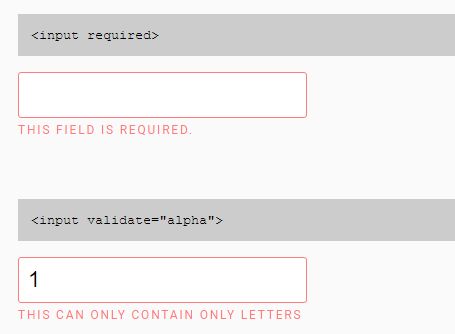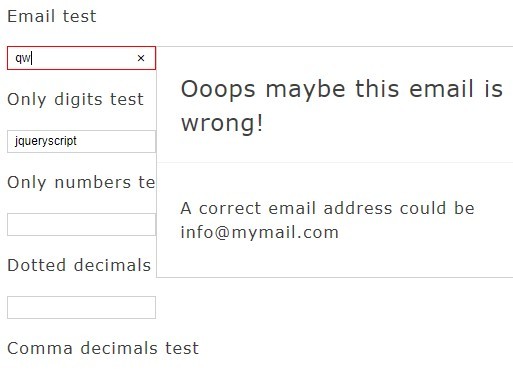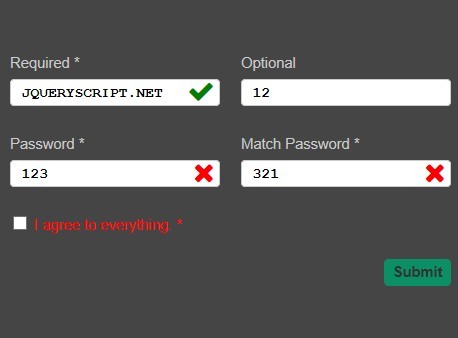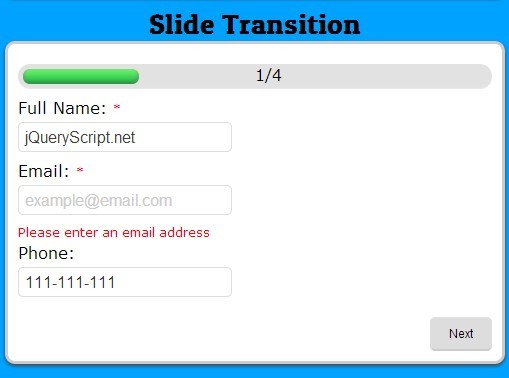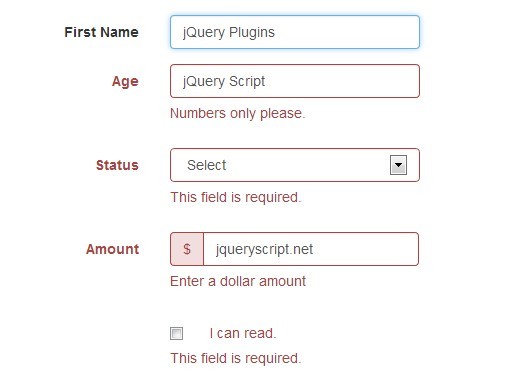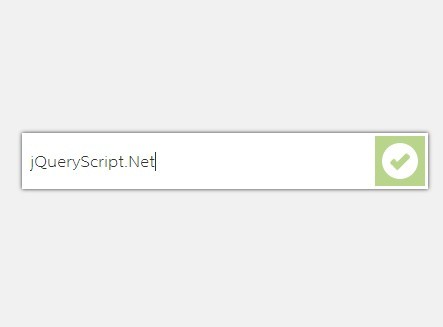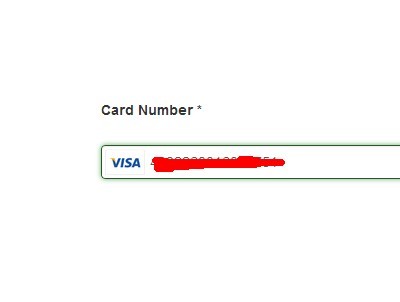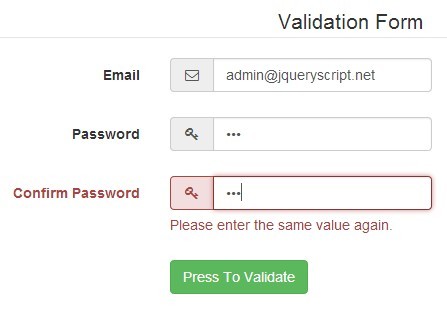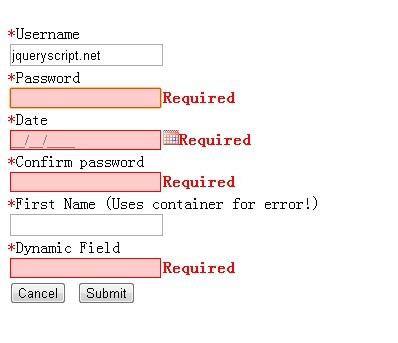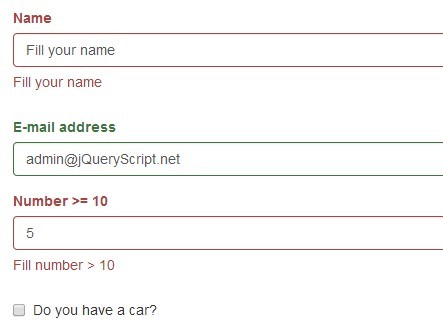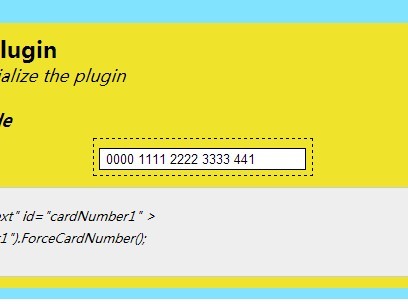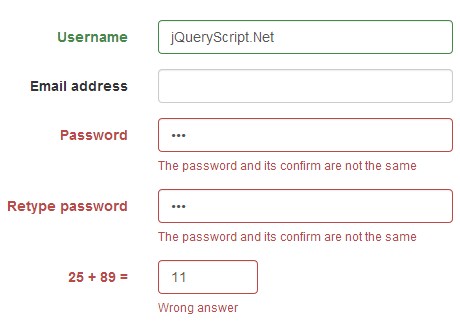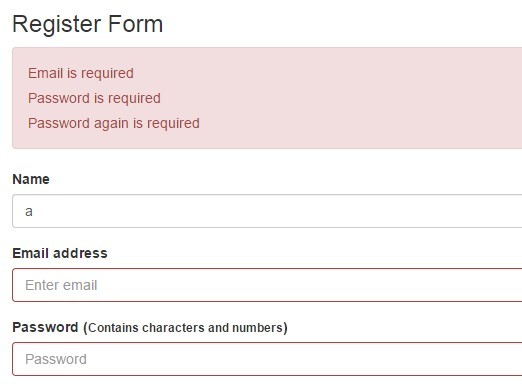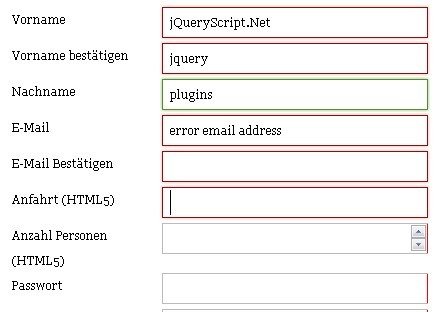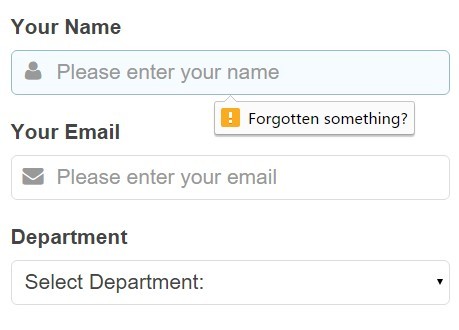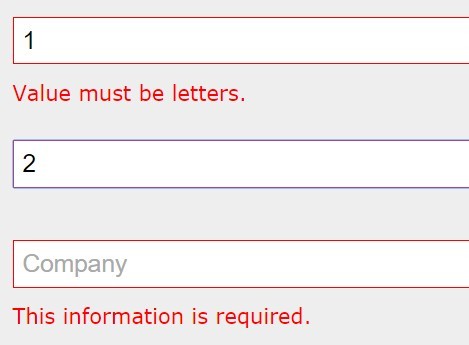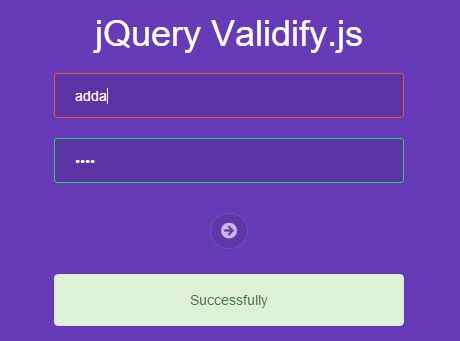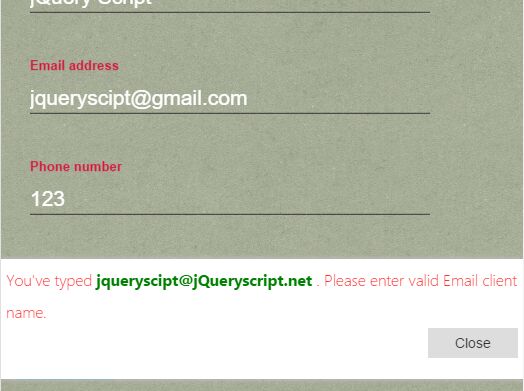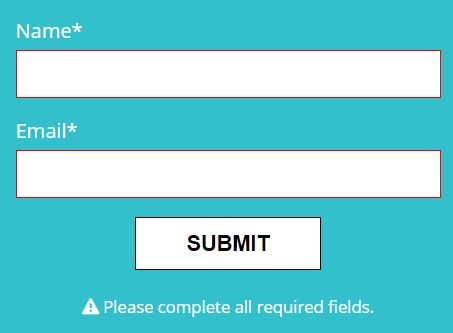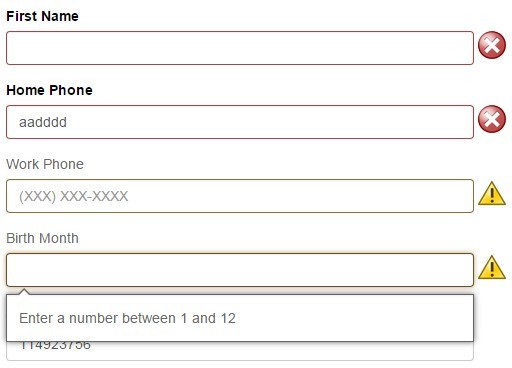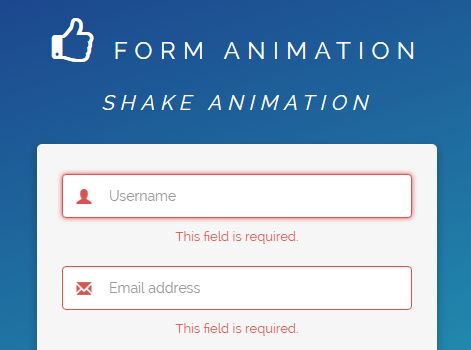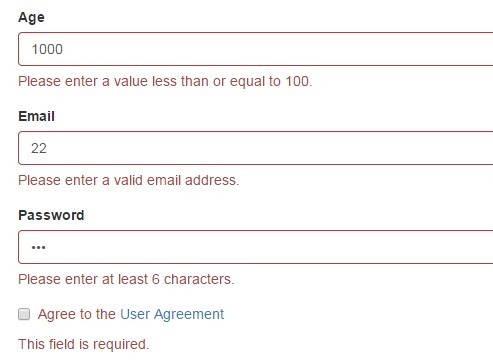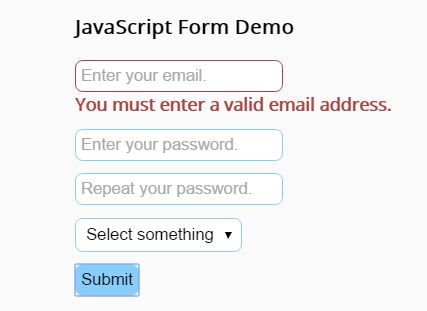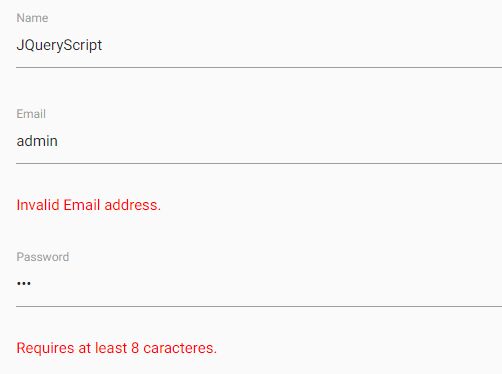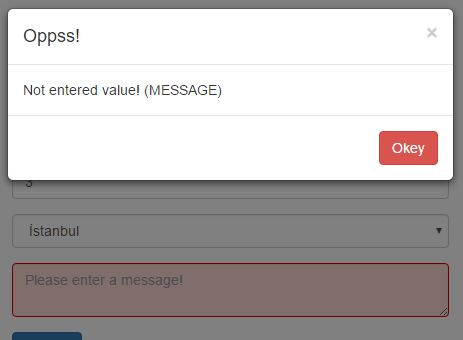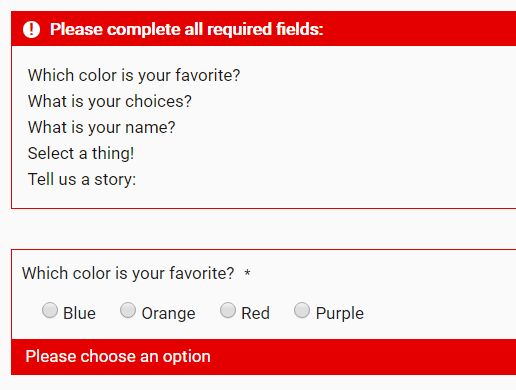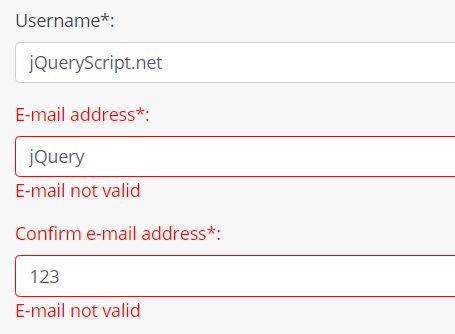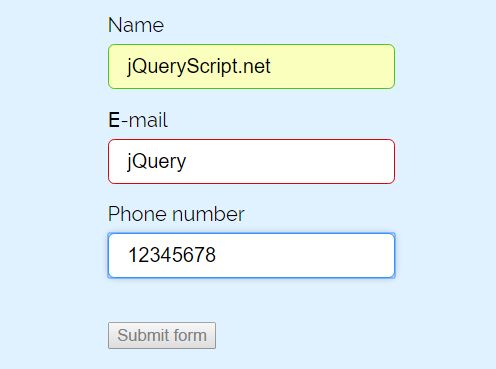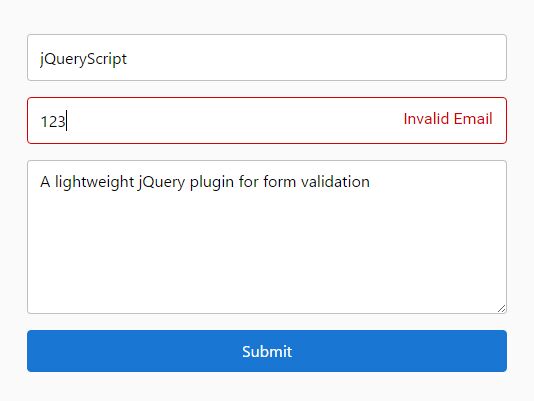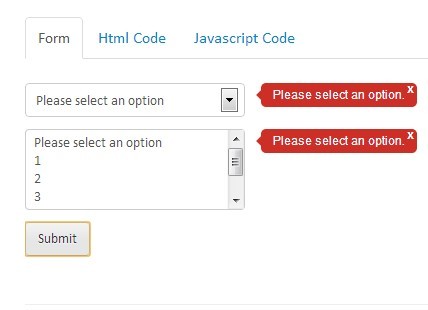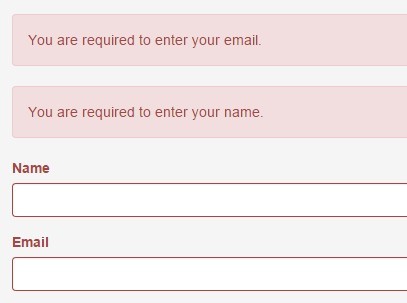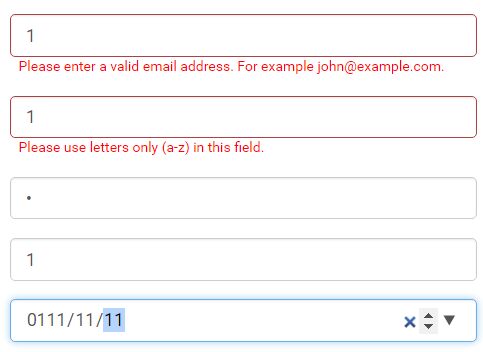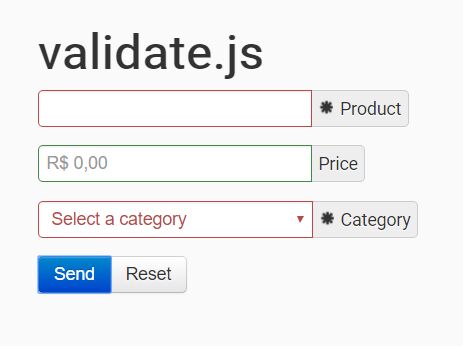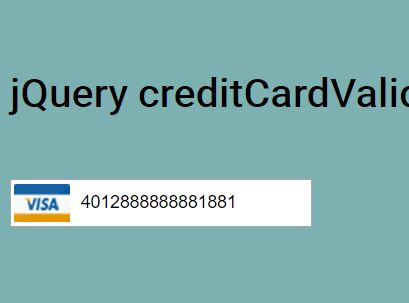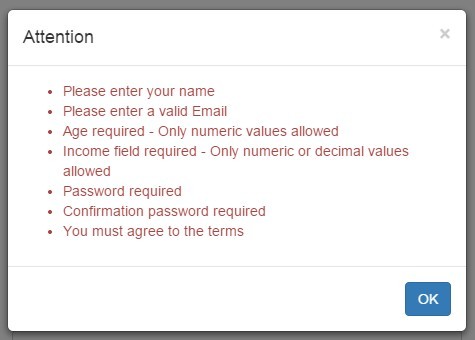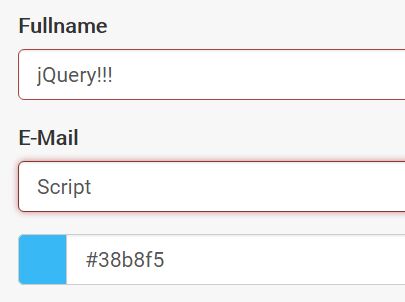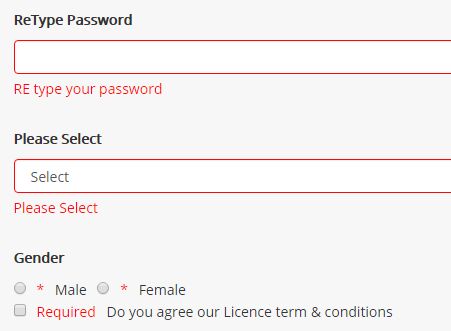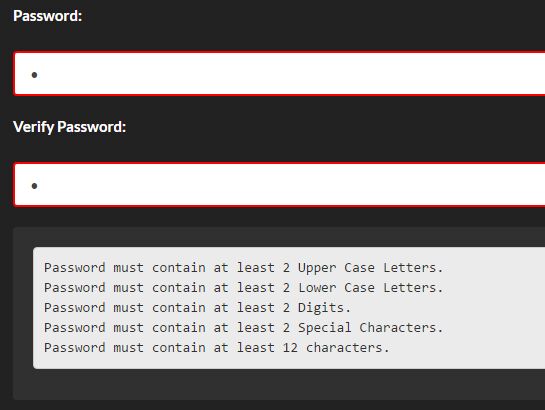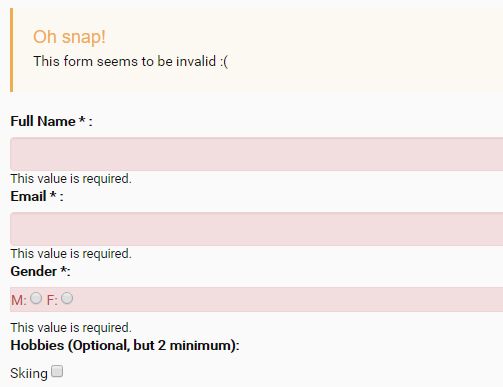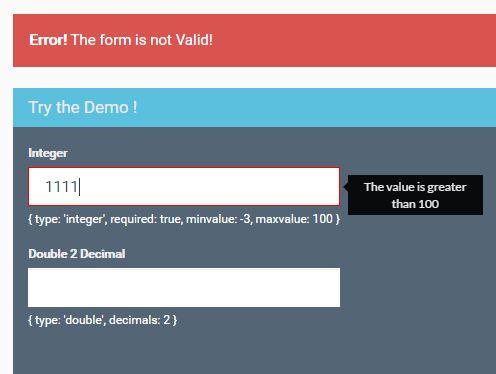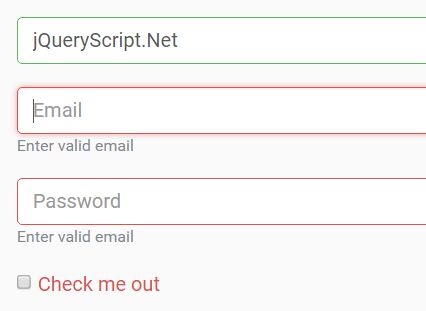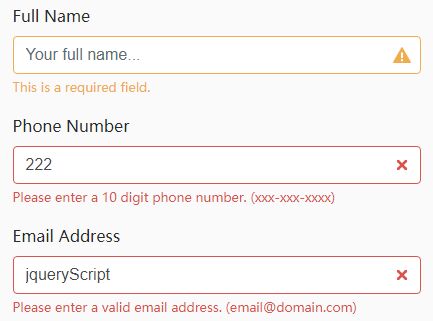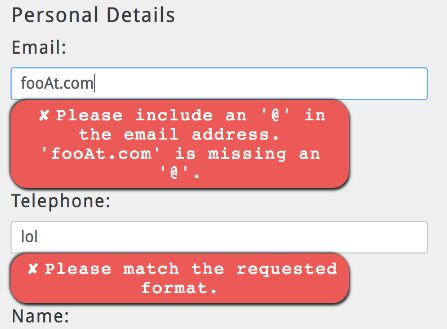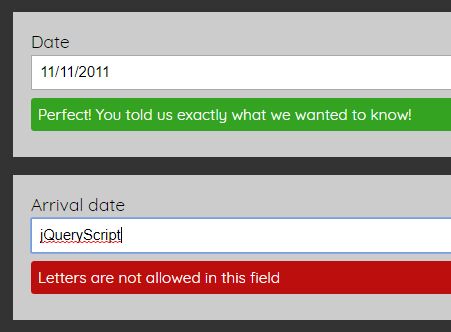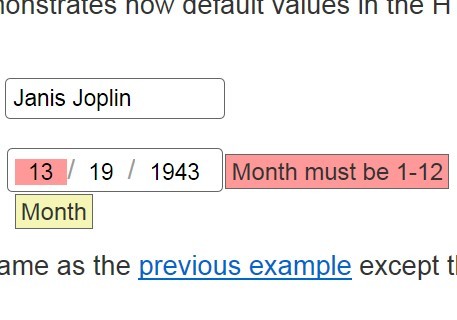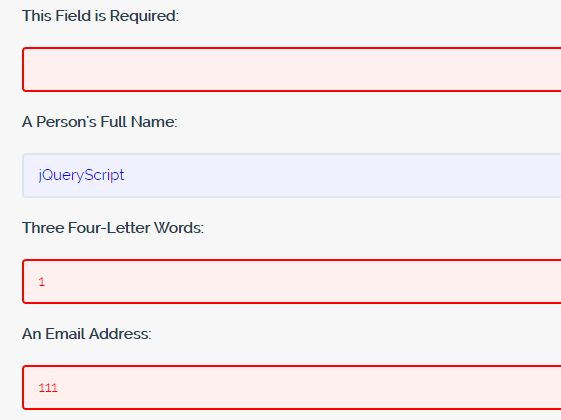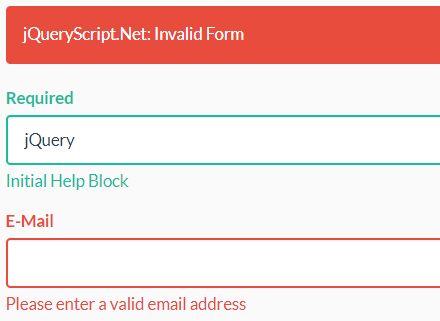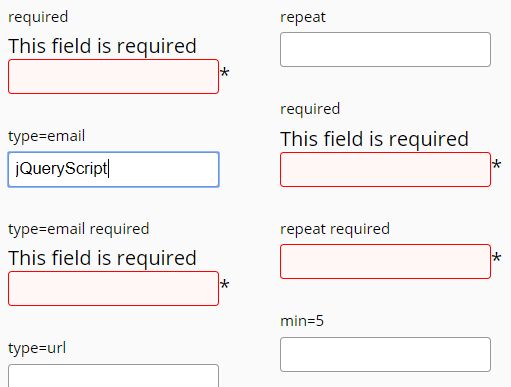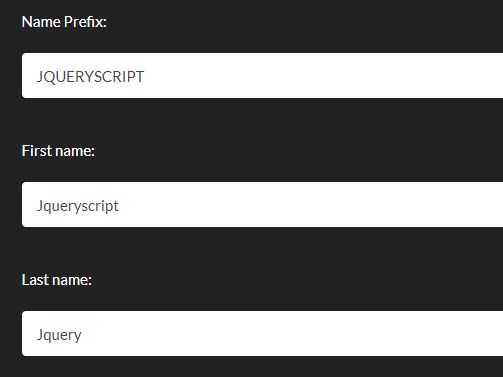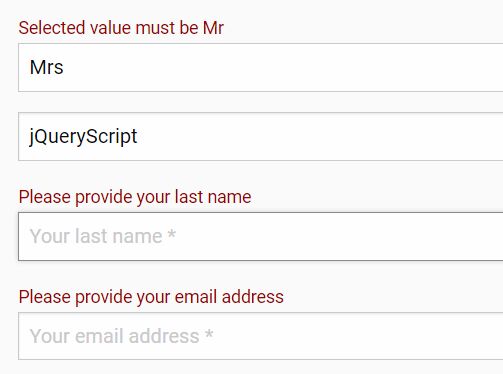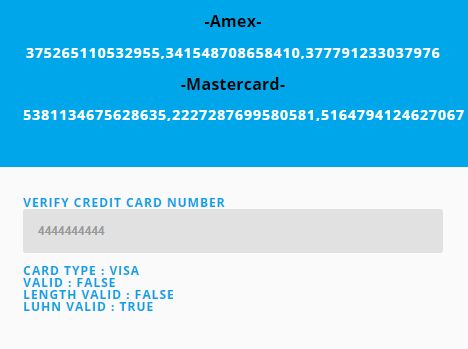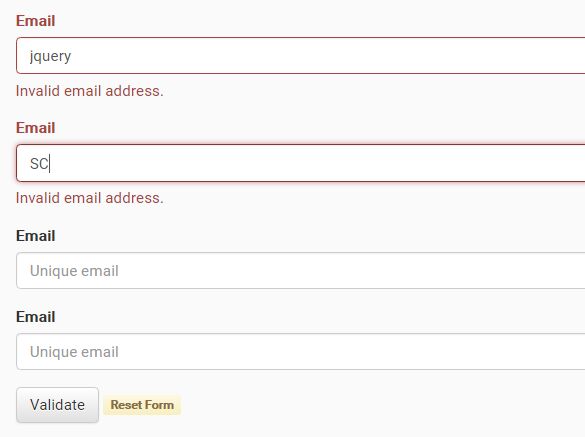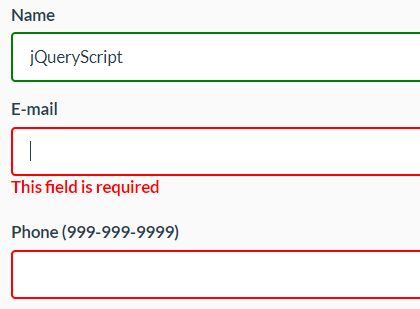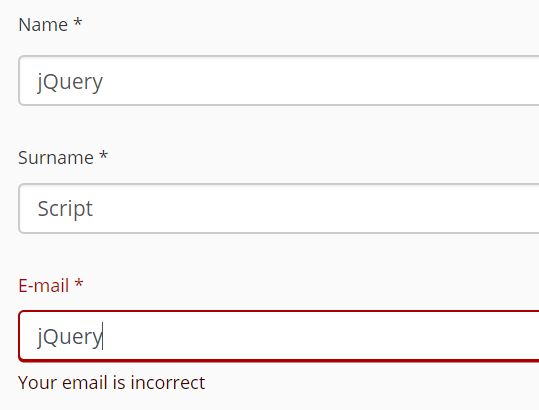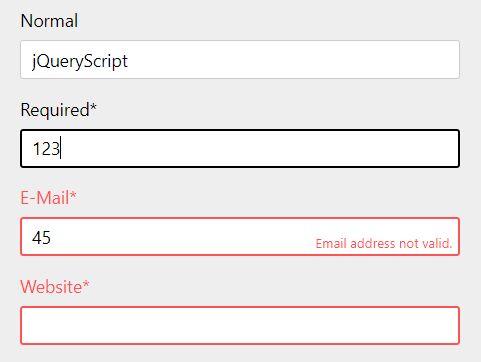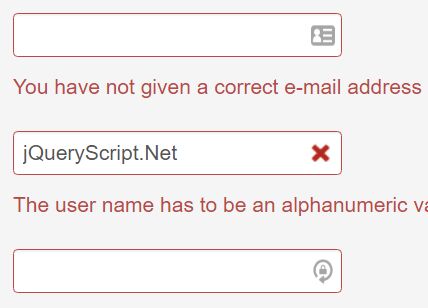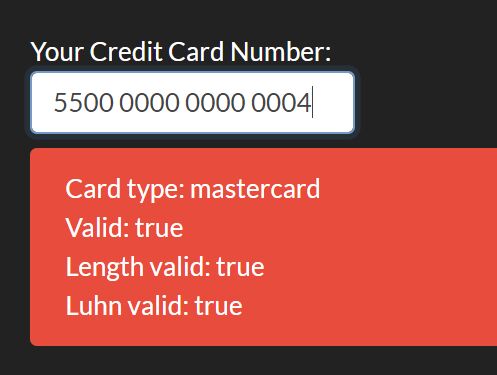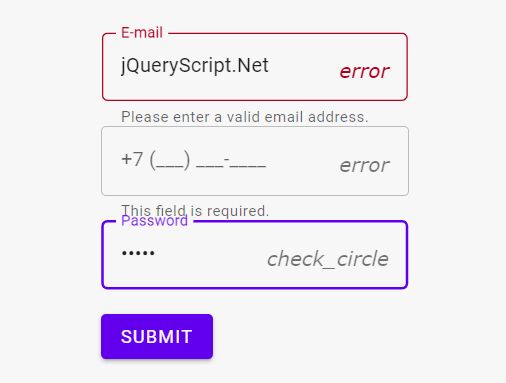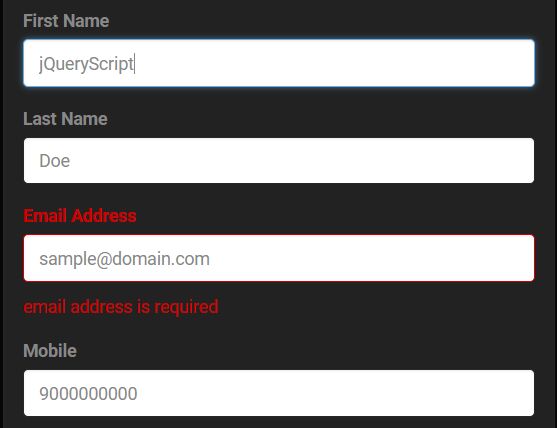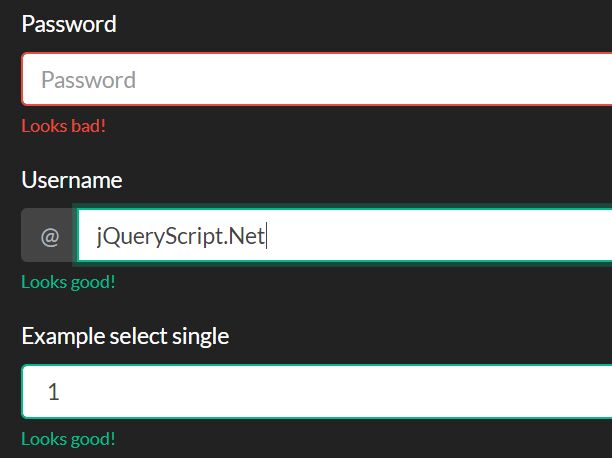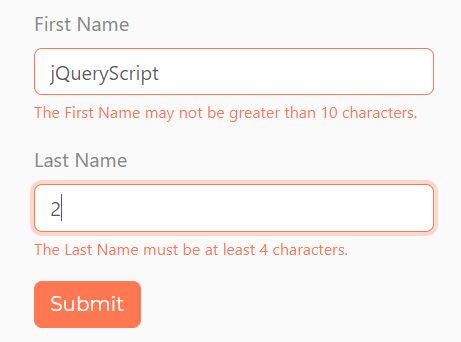validin
An simple and elegant form validator for jQuery
Demo
Usage
-
First, make sure you link to a version of jQuery and validin JS in your HTML (validin CSS optional).
-
Next, apply validin to a form in your scripts like so:
$('.form1').validin(options);Or to every form on a page:
$(document).validin(options); -
Lastly, add a
validateattribute on the input or addrequiredto tell validin to test that field.Examples:
<input name="email" validate="email"> <input name="address" required>
Validations
-
alpha - letters only
-
alpha_num - letters and numbers
-
alpha_space - letters and white space
-
alpha_dash - letters, hyphens, and underscores
-
alpha_num_dash - letters, numbers, hyphens and underscores
-
number - whole numbers only
-
decimal - any number, including decimals
-
name - letters, spaces, and common naming punctuation such as hyphens, periods, apostrophes, etc.
-
email
-
url
-
phone - including commong punctuation marks and formats
-
zip - including both 5 digit and 5+4 formats
-
creditcard - checks for basic credit card rules
-
regex - javascript style regular expression
<input validate="regex:/[0-9a-z]{1,3}-\d/i"> -
min - number, no smaller than the value given
<input validate="min:5"> -
max - number, no larger than the value given
<input validate="max:5"> -
min_length - any text, no shorter in length than the value given
<input validate="min_length:5"> -
max_length - any text, no longer in length than the value given)
<input validate="max_length:5"> -
match - Requires that the value of this input matches the element given (any CSS selector will work)
<input validate="match:.other_input">
Options
-
feedback_delay - The number of milliseconds before showing a validation error (default: 1500)
-
invalid_input_class - The class name to apply to invalid inputs (default: 'invalid')
-
error_message_class - The class name to apply to the validation error message elements (default: "validation_error")
-
form_error_message - The message that appears at the bottom of a form if there are any errors present (default: "Please fix any errors in the form")
-
required_fields_initial_error_message - Initial message showing why form is disabled if there are required fields but no errors (default: "Please fill in all required fields")
-
required_field_error_message - Message shown next to required fields that are not filled in AFTER field has lost focus (default: "This field is required")
-
override_input_margins - Setting to true will automatically adjust margins on the validation error message elements to position message close to input (default: true)
-
custom_tests - A javascript object that follows this pattern. Any test on this object will be added to the list of included tests listed above. (default: {})
'validation_test_name': { 'regex': /.*/i, 'error_message': "These values have to match" } -
onValidateInput: A callback function that will be run every time a validation test is executed (default: function(validation_info) {})
NOTE: validation_info contains an object with three values: input (the DOM element of the currently tested input), has_error (boolean), and error_message (string containing the error message of the current input, if any)
Adding custom settings might look something like this:
$('form').validin({ feedback_delay: 1200, override_input_margins: false, tests: { 'state_abbreviation': { 'regex': /[a-z]{2}/i, 'error_message': "State abbreviations are two letters long (eg. OR)" } }, onValidateInput: function(validation_info) { console.log(validation_info.input); console.log(validation_info.has_error); console.log(validation_info.error_message); } }); 